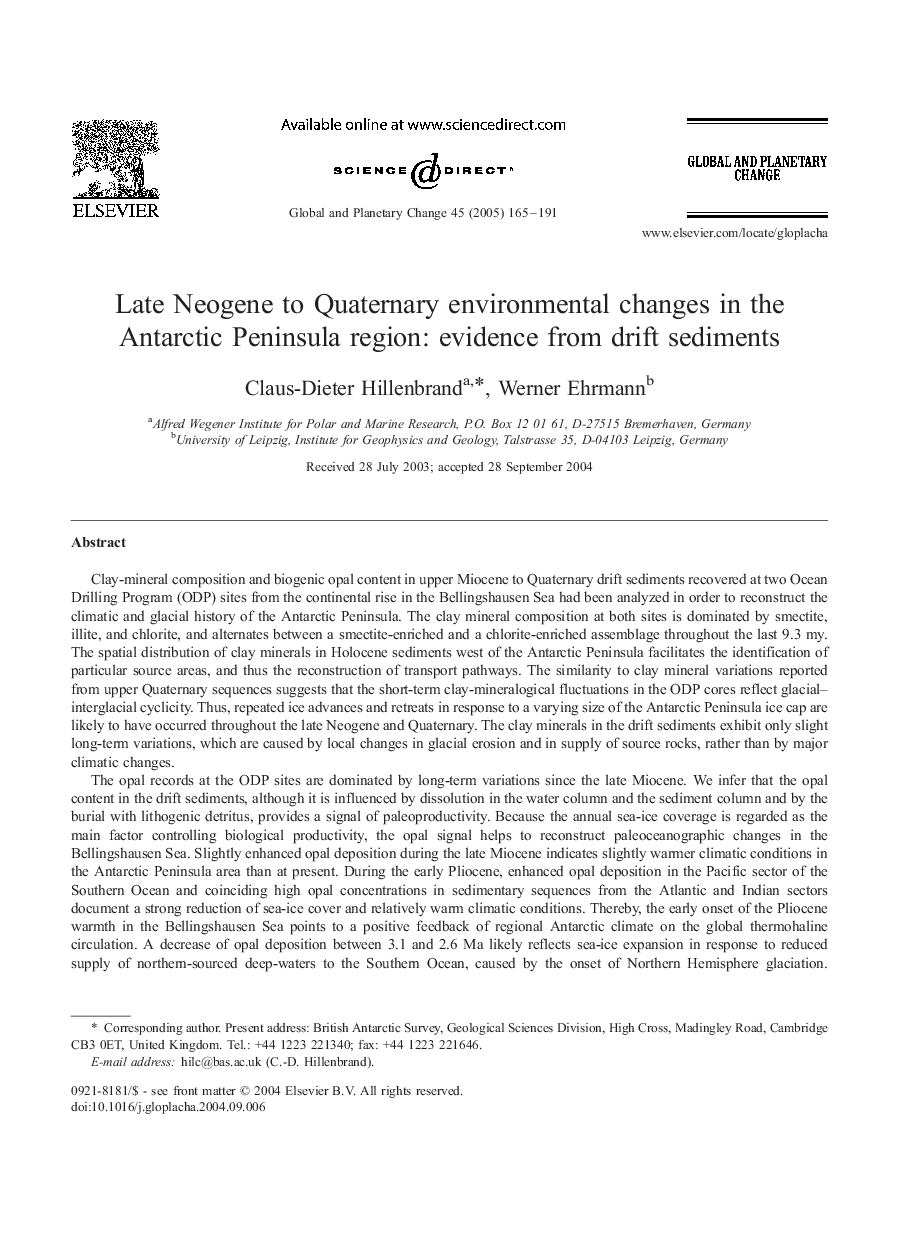| Article ID | Journal | Published Year | Pages | File Type |
|---|---|---|---|---|
| 9462469 | Global and Planetary Change | 2005 | 27 Pages |
Abstract
The opal records at the ODP sites are dominated by long-term variations since the late Miocene. We infer that the opal content in the drift sediments, although it is influenced by dissolution in the water column and the sediment column and by the burial with lithogenic detritus, provides a signal of paleoproductivity. Because the annual sea-ice coverage is regarded as the main factor controlling biological productivity, the opal signal helps to reconstruct paleoceanographic changes in the Bellingshausen Sea. Slightly enhanced opal deposition during the late Miocene indicates slightly warmer climatic conditions in the Antarctic Peninsula area than at present. During the early Pliocene, enhanced opal deposition in the Pacific sector of the Southern Ocean and coinciding high opal concentrations in sedimentary sequences from the Atlantic and Indian sectors document a strong reduction of sea-ice cover and relatively warm climatic conditions. Thereby, the early onset of the Pliocene warmth in the Bellingshausen Sea points to a positive feedback of regional Antarctic climate on the global thermohaline circulation. A decrease of opal deposition between 3.1 and 2.6 Ma likely reflects sea-ice expansion in response to reduced supply of northern-sourced deep-waters to the Southern Ocean, caused by the onset of Northern Hemisphere glaciation. Throughout the Quaternary, a relatively constant level of opal deposition on the Antarctic continental margin indicates relatively stable climatic conditions.
Related Topics
Physical Sciences and Engineering
Earth and Planetary Sciences
Earth-Surface Processes
Authors
Claus-Dieter Hillenbrand, Werner Ehrmann,
